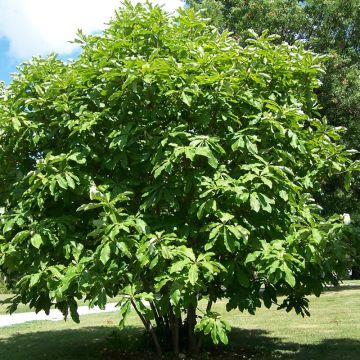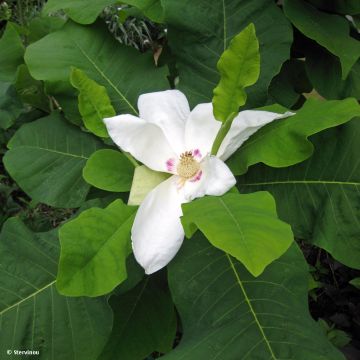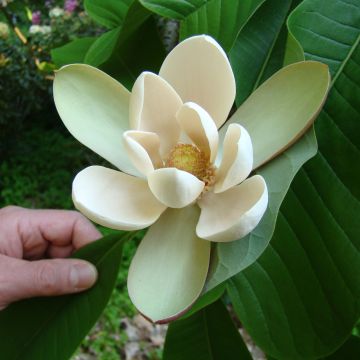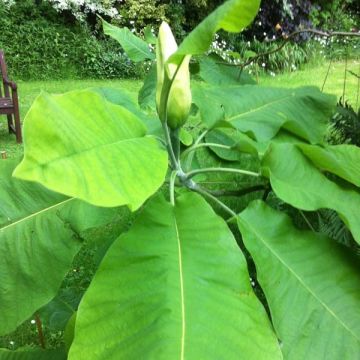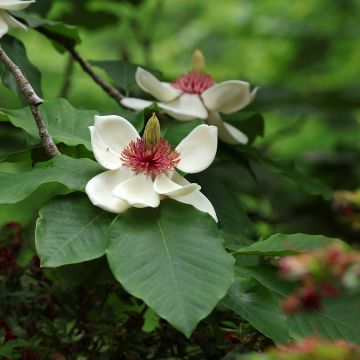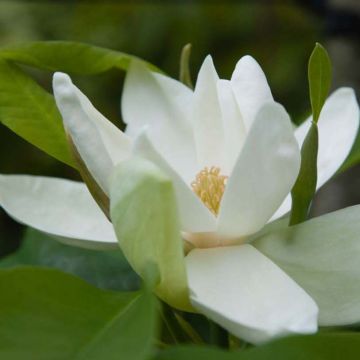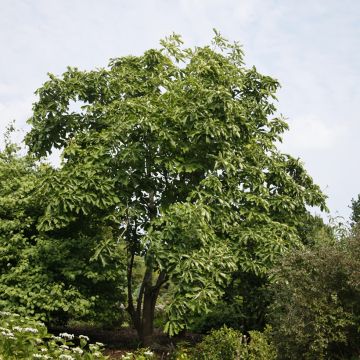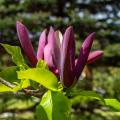Large leaved Magnolia
Does this plant fit my garden? Set up your Plantfit profile →
Available in 1 sizes
Available in 1 sizes
Available in 2 sizes
Available in 1 sizes
Available in 1 sizes
Available in 1 sizes
Available in 1 sizes
Available in 2 sizes
Large-leaved Magnolias are shrubs or trees with oversized leaves, for a guaranteed jungle and exotic effect in the garden. Magnolia macrophylla perfectly lives up to its name, with its large deciduous leaves that measure up to 80 cm (32in) in length. Magnolia hypoleuca (obovata) is not to be outdone: this hardy Asian species is also deciduous and is adorned with immense undulate leaves, as well as 20 cm (8in) waxy flowers, washed with cream and pink and beautifully scented. Let's also mention M. officinalis biloba with its evergreen leaves measuring up to 50 cm (20in) in length, or Magnolia tripetala, with its unique umbrella-like habit, whose deciduous leaves reach 60 cm (24in) in length and are grouped in clusters at the ends of the branches.
These Magnolias, magnificent in leaves and flowers, will work wonders in both medium-sized gardens and large parks! They are best planted as solitary specimens in the middle of short grass, or at the back of a group of lower shrubs. They pair well with the flamboyant flowers of deciduous Rhododendrons and azaleas that appreciate the same environments.
There are numerous varieties of Magnolias, deciduous or evergreen, large or small, with flowers of various colours.
Haven't found what you were looking for?







































